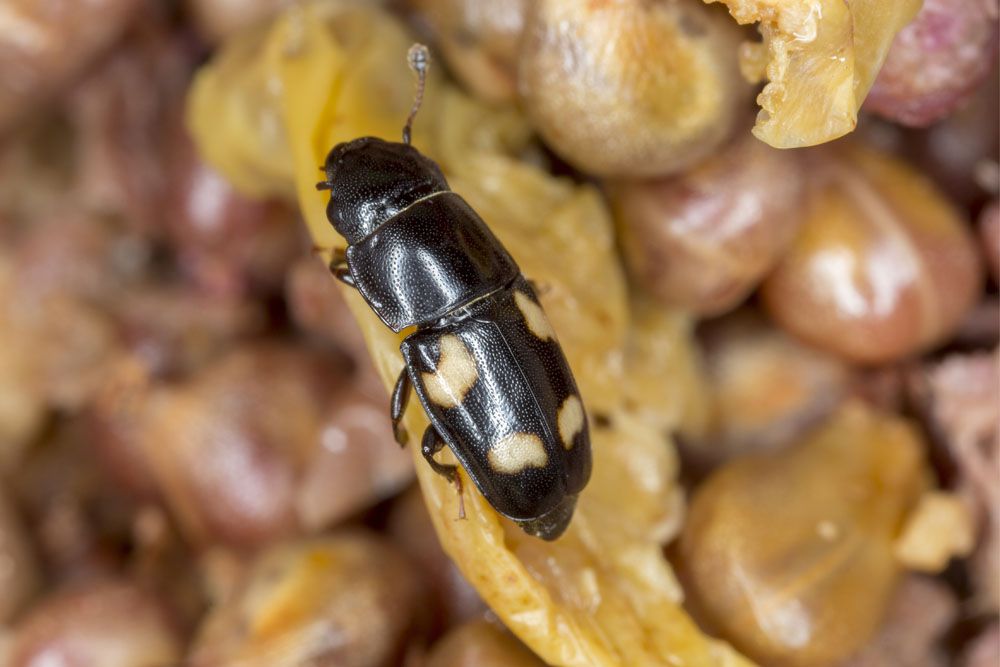
Fourspotted Sap Beetle – Glischrochilus quadrisignatus
Four Spotted Sap Beetle: Appearance, Territory, Damage and Life Cycle
Latin Name: Glischrochilus Quadrisignatus
Appearance: Glischrochilus Quadrisignatus, sometimes known as the four-spotted sap beetle, is a sap-feeding beetle in the Nitidulidae family. Beer bug and picnic beetle are two more frequent names. G. Quadrisignatus, which originated in North and Central America, was first spotted in European wildlife in 1954 and was classified as a foreign invasive in the Czech Republic in 2005.
Hosts Plants: Sap bugs like ripe, bruised, or fractured fruits. Sap beetles are attracted to any damage that exposes plant sap that has the potential to ferment.
Territory: North America
Damage Insect Cause: The larvae of tree-boring beetles are fed to four-spot sap beetles. As a result, they are something of an arborist’s ally in terms of tree health. However, if they detect the fragrance of rotting foliage in the garden, they can become a nuisance. This kind of beetle will prey on overworked gardeners. When fruits and vegetables rot on the vine or become infected with a disease and begin to decay, they emit volatile chemicals into the air. When the Four-spot Sap Beetle detects this odor, it will descend on the dying fruit or vegetable to feast on the remnants. There are more Four-spot Sap Beetles on their way where there is one. This can result in an infestation. Though they do not damage good food, their population may soon become out of control, making them a tough nuisance to eradicate.
Life History and Habits: After emerging after overwintering, adult females will deposit eggs on decomposing plant materials. The eggs hatch in June or July, and the larvae eat whatever plant material is around until they pupate. When they reach adulthood, they go in search of food. Vegetation wounded earlier in the season by other types of insects, such as beetle or moth larvae, allows the Four-spot Sap Beetle to feed instantly at the sites of the existing wounds. They are secondary invaders of several major agricultural crops, including maize and strawberries. A large number of them have been observed spreading a fungal infection to crops, further reducing the likelihood of a healthy harvest.
